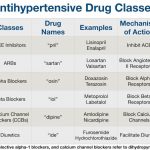Contents
The 12 Most Common Dietary Restrictions
Dietary limitations have always been present in society, but they are increasingly popular today as more people choose to restrict or skip meals for personal health or wellness.
Dietary restrictions occur for various reasons:
- Religious rituals
- Ideological convictions
- Allergies
- Special diets
- Dietary sensitivities
Many chronic health disorders can be greatly improved with the right combination of foods. When it comes to selecting a healthy diet, there is no one-size-fits-all solution. Different disorders require different diets.
Changing your eating and nutrition habits can be beneficial for your health.
12 common dietary restrictions
- Vegetarian and vegan diets
- Most vegetarians avoid meat, chicken, and fish, while some also exclude eggs and dairy. Vegans, on the other hand, do not consume any animal products.
- Vegetarians and vegans choose this lifestyle for various reasons, including animal rights, environmental concerns, health considerations, or religious and spiritual beliefs.
- While vegetarians and vegans can prepare nutritionally balanced meals at home, it can be more challenging to find suitable options at social events.
- Plant-based protein choices, such as dairy, beans, tofu, nuts, and seeds, are beneficial for individuals who abstain from meat.
- Halal
- Halal refers to meat or its processing method according to Islamic law. Muslims do not eat pork for religious reasons.
- Halal cuisine is becoming increasingly popular as a religious dietary choice.
- The term “halal” means permissible in Arabic and refers to food that adheres to Islamic law as outlined in the Koran.
- Strict slaughter procedures must be followed to certify meat as halal.
- Kosher or Kashrut
- Kosher refers to Jewish dietary regulations and specific animal slaughter methods.
- Kosher foods comply with Jewish law and have strict requirements regarding the type of food and its preparation.
- Preparing kosher meals can be costly.
- Celiac disease and gluten-free
- Celiac disease is an autoimmune disorder triggered by the consumption of gluten, a protein found in wheat, barley, and rye.
- Gluten intolerance is often misidentified as celiac disease or a food allergy.
- Gluten avoidance is necessary for individuals with celiac disease or gluten sensitivity. It is important to be cautious as gluten can be hidden in many dishes.
- Gluten-free and wheat-free diets have gained popularity for both health and medical reasons.
- It is crucial to differentiate between wheat or grain-free foods and foods that are genuinely gluten-free.
- Lactose Intolerant
- Lactose intolerant individuals are unable to adequately digest lactose, the sugar found in dairy products.
- Many people avoid dairy by choice or due to an allergy or intolerance.
- Consideration should be given to these dietary requirements when preparing meals.
- Food allergies
- Food allergies are disorders of the body’s immune response to certain dietary proteins, ranging from mild to severe symptoms.
- The most common food allergies in the United States are triggered by milk, eggs, shellfish, fish, peanuts, tree nuts, soy, and wheat.
- These allergens can be hidden ingredients in food, requiring special care to avoid them.
- Many schools have implemented peanut or nut-free policies.
- Proper labeling of nuts or nut products as potential allergens is crucial.
- Diabetes diet
- Individuals with diabetes have difficulties maintaining healthy blood sugar levels due to insulin deficiency, resistance, or both.
- Consumption of sugary foods must be carefully monitored.
- Berries, leafy greens, fatty fish, eggs, almonds, avocados, and beans are popular choices for diabetes-friendly meals.
- The specific dietary requirements for a diabetes diet vary based on individual factors, including type and severity of diabetes.
- Meal planning is based on carbohydrate serving sizes, with strict limitations on starches, starchy vegetables, juice, and sweets.
- Small snacks may be included in the meal plan.
- Low-sodium diets
- An average American diet contains approximately 3,400 mg of salt per day, but most people should consume closer to 2,300 mg of sodium per day.
- Individuals with high blood pressure, kidney disease, liver disease, or heart problems, among other conditions, are recommended to follow a low-sodium diet.
- For those on a low-sodium diet, salt consumption should be limited to 1,500 mg per day.
- Paleo diet
- The paleo diet is based on the foods consumed by early humans.
- The diet primarily consists of meat, fish, vegetables, and fruit, with no dairy, grain products, or processed foods.
- Choosing meat and vegetables that are not accompanied by cheese, sauce, butter, etc., is key for those following the paleo diet.
- Raw food
- The raw food diet consists of uncooked and unprocessed foods such as vegetables, fruits, seeds, and nuts.
- Raw meat is often unsafe to consume, so raw food followers obtain their protein from sources like raw eggs, legumes, almonds, dairy, and sushi-grade fish.
- While focusing on natural foods, adherents do not cook or consume meat.
- Ingredients should be unrefined, unpasteurized, raw, and free of pesticides.
- Cholesterol-restricted diet
- A cholesterol-restricted diet limits the consumption of red meat, poultry, fried foods, egg yolks, whole milk products, saturated fat, and trans fatty acid-rich foods.
- The diet includes skim milk, lean meats, fruits, vegetables, and whole grains.
- Renal diet
- A renal diet is carefully planned with specific consideration for nutrients and may be adjusted as kidney disease progresses.
- It can be used to slow the progression of renal failure.
- The diet varies based on renal function test results and may involve limiting certain foods.
- Renal diets are typically low in sodium, phosphorus, and protein.


